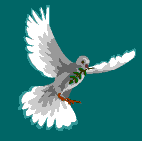 Peace in Iraq
WebQuest
Peace in Iraq
WebQuest

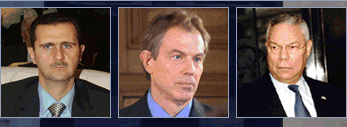

For
Mr. Stanton's AP Human
Geography Class
Introduction | Task
| Process | Resources | Evaluation
| Conclusion

 INTRODUCTION
INTRODUCTION

It has often been said that War is easy. It's
peace that is difficult. From early humanity to the
21st century, war
has existed as one of the defining elements and features of human
history. Ideological, religious, political, social, economic, cultural,
and ethical
orientations, interests, and goals of nations have come into conflict
quite often when interacting with each other throughout history. If
conflicts among nations are not solved through such peaceful ways
as diplomacy, negotiations, and formal agreements,
those people who have power and authority either legitimately or
illegitimately to make decisions with respect to important issues
confronting their
country, often resort to war as an attempt to accomplish their
goals at the expense of other nations.
On the 19th of March, 2003 US
President George W Bush and British Prime Minister Tony Blair
unilaterally declared war on Iraq. The initial reason given to the
world was that Iraq possessed weapons of mass destruction. No such
weapons were ever found and President Bush and Prime Minister Blair
later publicly admitted such. The First Gulf War, waged in 1991, with
the blessing of the United Nations, and with the participation of the
armed forces of more then 20 countries, stopped short of marching into
Baghdad and physically removing Sadam Hussein. There was a reason for
this. The coalition, lead by President George Herbert Walker Bush,
believed such a move would destabilize Iraq and perhaps even the entire
Mideast. The world is now seeing that the first George Bush was right,
at least on the first account.
Now more then three years after
the overthrow of Sadam Hussein, Iraq is in chaos. With the death of
more then 3,000 US and British troops and 600,000 Iraqi's, there
seems to be no end in site to the mass violence plaguing Iraq. Citizens
of the United States, Great Britain and around the world are demanding
a solution the quagmire. A time-table has now been set to with-draw all
foreign forces in Iraq with-in the next 18 months. Your job is
to find a way to end the violence in Iraq, so the people of Iraq can
live in peace once US and British forces leave.
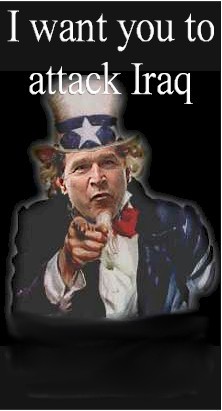

 THE TASK
THE TASK

The United Nations has determined
that one of four options would work best for Iraq and the region as a
whole. The first option is to partition Iraq into three equal countries
along ethnic lines, but giving fair consideration to also equally
partitioning the countries oil fields. The second option is to keep
Iraq intact as a nation, but to divide it into three autonomous
confederacies. Forming an oil ministry that would equally divide the
oil revenues among the three autonomous zones. The third option is
divide the country along ethnic lines and give the three parts to
Turkey, Iran, and Syria or Jordan. The final option is to create a new
nation of Kurdistan, asking Turkey and Iran to surrender their Kurdish
areas and giving Turkey and Iran equal or more parts of Iraq as
compensation. (That's of course if the Iranians and the Turks are
willing, to do the later. Basically they would want to know what they
would get out of it.)
Your
Job is to:
 Select one of
these four solutions.
Select one of
these four solutions.
 Redraw
the Map of the region.
Redraw
the Map of the region.
 Write
a two page position paper supporting your solution
Write
a two page position paper supporting your solution
 Present
your findings to class in a persuasive way
Present
your findings to class in a persuasive way
Introduction |
Task
| Process | Resources | Evaluation
| Conclusion


 THE PROCESS
THE PROCESS

EACH
GROUP SHOULD PRODUCE AND PRINT A DOCUMENT THAT HAS THE FOLLOWING
COMPONENTS:
1. Complete
answers to the 5 sets of questions that relate to the associated
web sites below. (3
points each, 15 points total)
2. Showing the current
boarders of Iraq and it's direct neighbors, you are to plan, design,
and construct a new map of the region using one of the four options
outlined in the task.
(10 points total)
3. Write a two page persausive
position paper supporting your solution. You must explain, in depth,
why your solution is better then any of the other three options.
You use the information you
gathered by answering the questions. (20
points total)
4. You must present your
finding to the class in a persuasive way in no more then 5 minutes.
(10 points total)
GO TO ASSOCIATED WEBSITES AND
ANSWER THE FOLLOWING QUESTIONS
Answer each
question carefully. Make sure to fully explain your
answer. A good answer is three sentences long.
Go to each website, read the
article,
and answer the question, before doing the map and writing the two page
position paper.
- The
History of Iraq - How has
Iraq's history
contributed to it's current problems?
- Note how the
country was divided by the Ottoman Turks, before the British created
the Iraqi Mandate. Ottoman
Empire 1481-1683
- Take a look at
Iraq's Oil Fields. Iraqi
Oil Infrasructure
- Read the San
Francisco Chronicle article on partitioning Iraq. Way
out of Iraq - Partition
- Here's a good
strory from the Pittsburg Post Gazette. Redraw the
Map
- Here's a
Washington Post article against partition. Partition
not the solution
- Encylopedia
Britanica (Ethnic Groups in Iraq pg 13-16) - What are the main differences
between the three main ethnic groups in Iraq?
- Note the map of
the ethnic divisions that exist in Iraq today. Ethnic
Map
- Take a look at
the Kurdish and Shite areas in and around Iraq. Disident
Map
- Note the
population centers in Iraq. Population
Density Map
- Read the Gardian
article agaist Federalism. Treading
a federal tightrope
- Here's a short
article to ask Iran and Syria for help. Blair says
Iran and Syria can aid path to peace
- The
History of Bosnia (Read
the section in the World Book On-line about the history of Bosnia.) Why
did Bosnia plunge into ethnic war after it's independence? What was the
solutiion devised by the Dayton peace plan? What has life in Bosnia
been like since the the Dayton Peace Plan?
- Take a look at a
map of the former Yugoslavia. Yugoslavia
Map
- Take a look at
the map of Bosnia's ethnic groups. Ethnic
Majorities
- This is a map of
Bosnia now, after Dayton. Bosnia
Today
- The
Partition of India - Why did the British decide to partition India
before granting it independence? What was the effect of India's
partition into India and Pakistan? (Maps are included in the article)
- Break
up of Czechoslovakia (Read the section in on-line Britanica
"Struggle for Independence" and "The collapse of Communism and the
dissolution of the federation")- Why did Czechoslovakia break-up into
two countries? What has been the effect of that break-up?
- Take a look at Czechoslovakia before it's breakup. Czechoslovakia
- This is the two new countries that make up the Czech
Republic and Slovakia.
Please Note: You need to use Microsoft
Word to put your final Document together.
Introduction
| Task | Process | Resources
| Evaluation | Conclusion
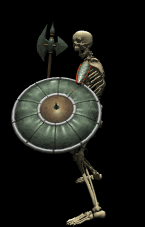

 RESOURCES
RESOURCES

A.
PRINT RESOURCES
B.
INTERNET LINKS TO USE:
Introduction
| Task | Process | Resources
| Evaluation | Conclusion

 EVALUATION
EVALUATION

The final
product is worth a total of 55 Points. Students will be evaluated
according to the following:
 GRADE
FOR FINAL PRODUCT (Up to 55
points each)(see The Process section above)
GRADE
FOR FINAL PRODUCT (Up to 55
points each)(see The Process section above)
 INDIVIDUAL
GRADE FOR GROUP PARTICIPATION
(Points
will be deducted if participation is unequal)
INDIVIDUAL
GRADE FOR GROUP PARTICIPATION
(Points
will be deducted if participation is unequal)
 FINAL
ASSESSMENT UNIT 3B TEST
FINAL
ASSESSMENT UNIT 3B TEST
Introduction
| Task | Process | Resources
| Evaluation | Conclusion
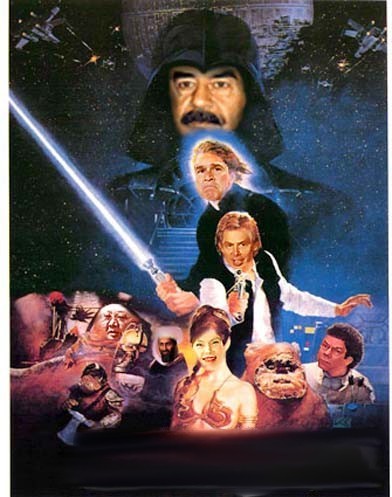

 CONCLUSION
CONCLUSION

Congratulations! By
engaging in the task structured into this Web Quest, you have gained
insight into different aspects of what it takes to make peace. You are
now in a better position to look at the issue from a different and
multiple perspective after experiencing the perspectives, goals, and
interests of the Iraqi people and the people of the middle east. Your
engagement with critical analysis of the issue through online research
will help you understand the problems caused by ethnic and religious
strife. By evaluating peace in Iraq within the larger historical,
social, economic, ethnic, and cultural framework, you developed your
skills in understanding how decision makers of the past shaped the
present and how decisions of today's policy makers can shape the
future. The war with Iraq will certainly have long-lasting effects on
people's lives both in the Middle East and in the world, and you can
view those prospects effects and changes from a better vantage point.
Introduction
| Task | Process | Resources
| Evaluation | Conclusion
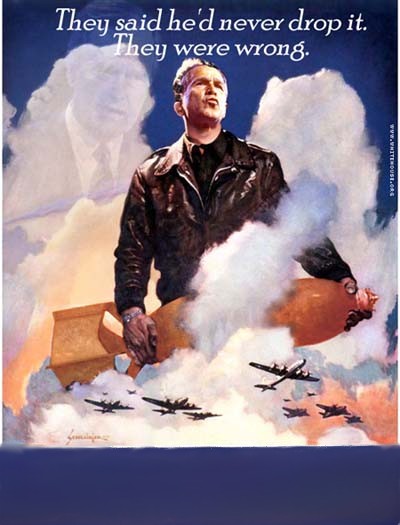





This webquest was altered from one found on the web at
http://kaya1.myweb.uga.edu/WebQuest.html
 Peace in Iraq
WebQuest
Peace in Iraq
WebQuest




 INTRODUCTION
INTRODUCTION



 THE TASK
THE TASK

 Select one of
these four solutions.
Select one of
these four solutions.  Redraw
the Map of the region.
Redraw
the Map of the region.  Write
a two page position paper supporting your solution
Write
a two page position paper supporting your solution Present
your findings to class in a persuasive way
Present
your findings to class in a persuasive way

 THE PROCESS
THE PROCESS

 Work in teams of 2
Work in teams of 2 Read the background
information on Iraq's ethnic issues.
Read the background
information on Iraq's ethnic issues. Read about other
recent ethnic issues that have occurred around the world and some of
the solutions that have been instituted to solve these issues.
Read about other
recent ethnic issues that have occurred around the world and some of
the solutions that have been instituted to solve these issues. Answer the questions
about Iraq's ethnic and Economic boundaries.
Answer the questions
about Iraq's ethnic and Economic boundaries.
 Re-draw the map of
Iraq using one of the four options identified in the Task.
Re-draw the map of
Iraq using one of the four options identified in the Task. Write a two page
position paper supporting your solution to the ethnic issues in Iraq.
Write a two page
position paper supporting your solution to the ethnic issues in Iraq. Present your
findings to the class in a persuasive way.
Present your
findings to the class in a persuasive way.

 RESOURCES
RESOURCES


 EVALUATION
EVALUATION

GRADE FOR FINAL PRODUCT (Up to 55 points each)(see The Process section above)
INDIVIDUAL GRADE FOR GROUP PARTICIPATION (Points will be deducted if participation is unequal)
FINAL ASSESSMENT UNIT 3B TEST


 CONCLUSION
CONCLUSION


